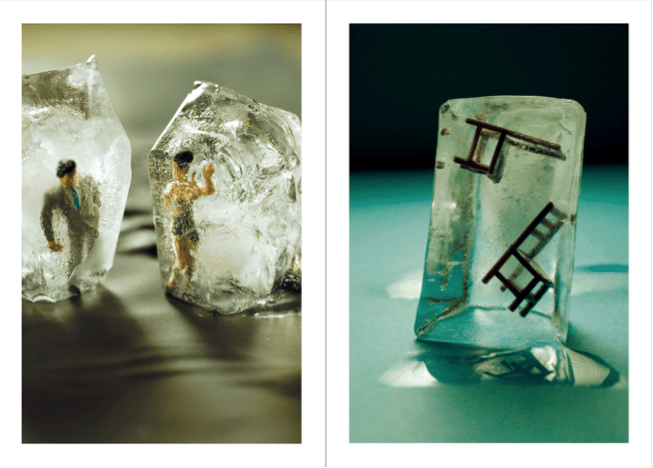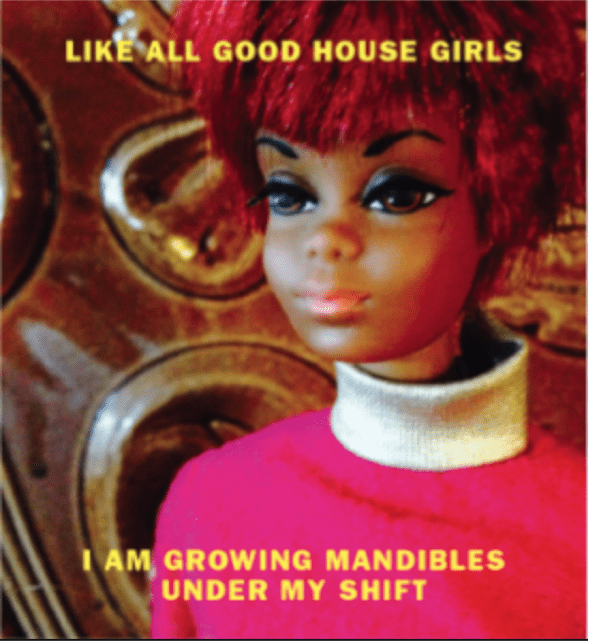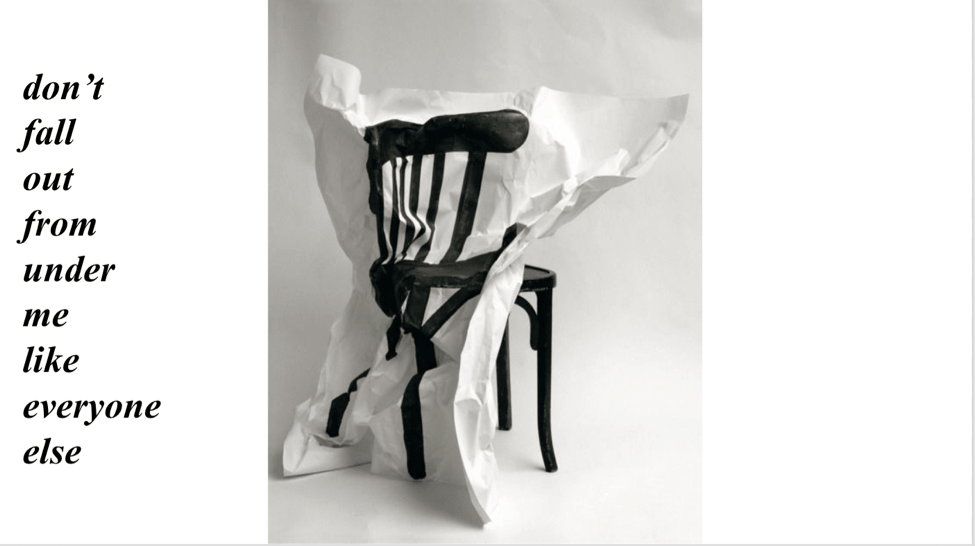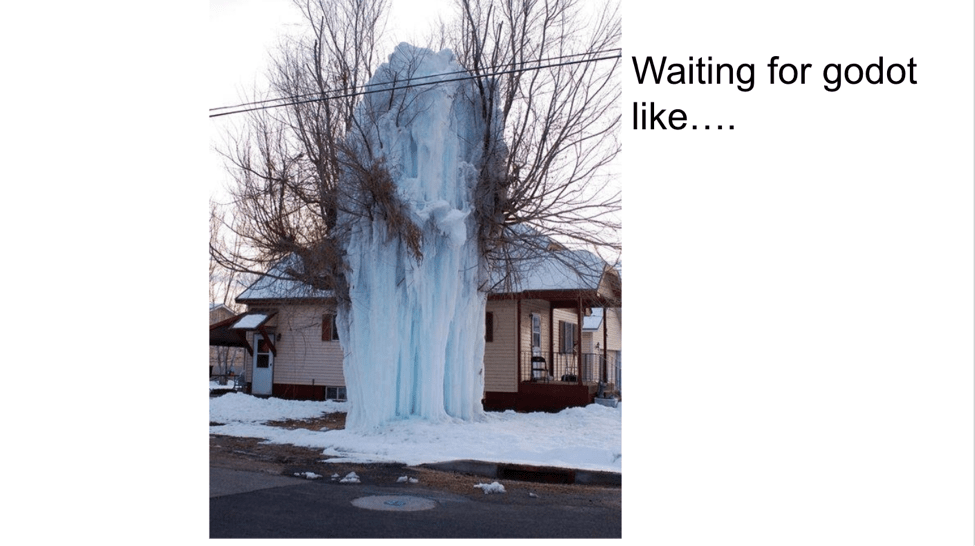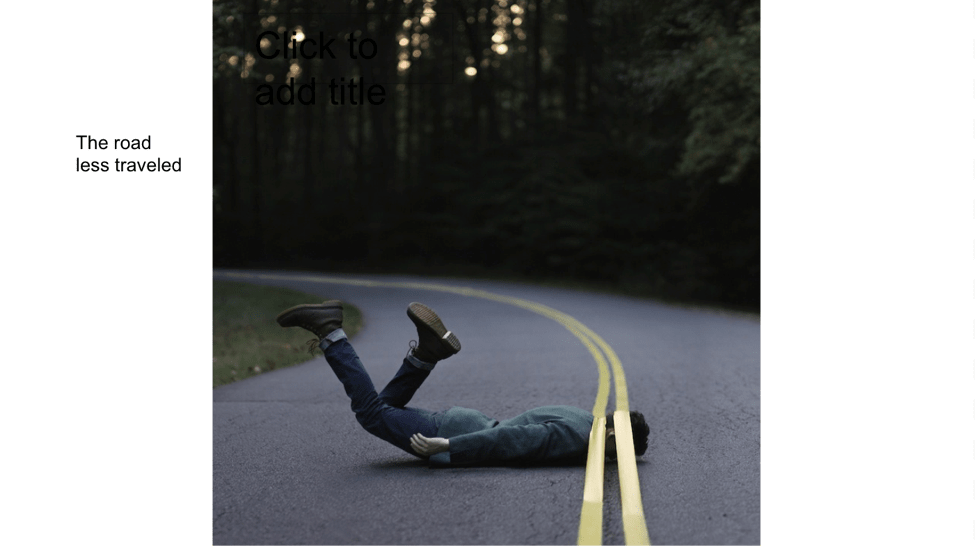
Wednesday, October 10, 2018 The Art of The Meme
Whoever said memes can’t be art doesn’t have a sense of humor, or of art for that matter–and they definitely haven’t met Travis Sharp. That idea was one of the jumping-off points at the Drawing Words & Writing Visual Texts workshop he ran at the Just Buffalo Writing Center in early October.
Sharp, a PhD student in the Poetics program at SUNY Buffalo, centered the first day of workshop around the visual and physical structure of letters and words. At first, the prompts were straightforward:
● Draw a vertical line.
● Draw a lowercase “l”.
● Draw the uppercase “I” upside down.
The language used here is crucial. Sharp asked the students, Ryan and Theo, to “draw” instead of “write” letters. Without saying it, Sharp rejects the confinements of what can or cannot be drawn or a drawing. The task is visual in its instructions, and eventually becomes more abstract:
● Draw a face.
● Draw the word “face”.
● Draw the word “word”.
● Draw the word “poem”.
● Draw a poem.
The ambiguous reasoning behind the instructions creates space for a myriad of interpretations–both for what it means to draw and what it means to write poetry. What does it mean, for example, to “draw” a poem? Do you draw lines in the form of stanzas? Do you draw words escaping from a brain? A heart? It’s hard to convey what exactly the directions mean, but it allows the results to be endless.
“It’s not really explaining something but it’s creating some sort of experience that you can talk about.” Sharp said, on the topic of writing from the vantage point of the visual.
On the second day of workshop, he inverted that prompt. First, by projecting images from Matthea Harvey’s If the tabloids are true… a book of photos and artwork accompanied by poetry. The collection is beautiful but eerie, especially in the way it unsettles our expectations of how things should be. 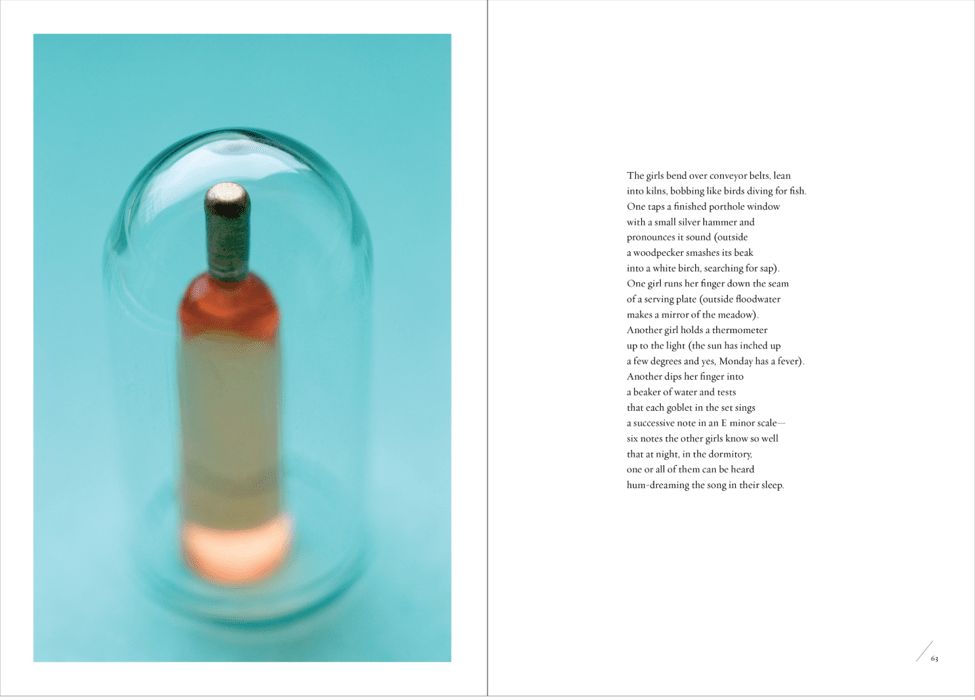 from Matthea Harvey’s “If the tabloids are true…”
from Matthea Harvey’s “If the tabloids are true…”
There’s an uneasiness in seeing something warped from its usual context, like a mermaid with scissors for a tail, or a set of tiny chairs and human figurines paralyzed in blocks of ice.
from Matthea Harvey’s “If the tabloids are true…”
The two students attending the workshop, Ryan and Theo, took different paths:
Have you ever heard someone say
If you choke on ice,
All you have to do is wait?
What if you get frozen with ice?
Just wait
Wait until it melts so I can move
Wait until the cold stops
Stop
Please stop
Get this ice out from between my thighs and handbag.
But I just have to wait.
Tick tock
I’m getting bored
I think this ice is starting to reach my heart
I can feel my blood freezing
My veins closing
My heart stopping
Stop
Please stop
How long must I stay waiting?-Ryan
Theo on the other hand saw the ice as an opportunity to speak on the obvious, and not so obvious, as he explained to the group that day. The obvious being the objects trapped in ice, and the not so obvious being the elements not present in the photo.
I tried to say
Look at where you are today
I tried to tell you about fossil fuels and greenhouse gasses and global warming
But you ignored us didn’t you?
And now the tides have come swarming.-Theo
The workshop then dove into the work of Nikki Wallschlaeger from her book I Hate Telling You How I Really Feel, where she takes a photo of a black Barbie doll and layers text over the image.
from Nikki Wallschlaeger’s “I Hate Telling You How I Really Feel”
Not mentioned in the workshop was Wallschlaeger’s rationale, which relates to many of the ideas Sharp touched on during the workshop. In conversation with Entropy Magazine, Wallschlaeger said this about the series:
“I was feeling the effects of race, class, and identifying as a woman. In these moments I turn to poetry for strength, but sometimes it’s not as immediate as a form I need. Memes, on the other hand, need very little editing and are capable of distilling all that needs to be said in a few pithy sentences. I find this form very satisfying and most importantly of all, hilarious.”
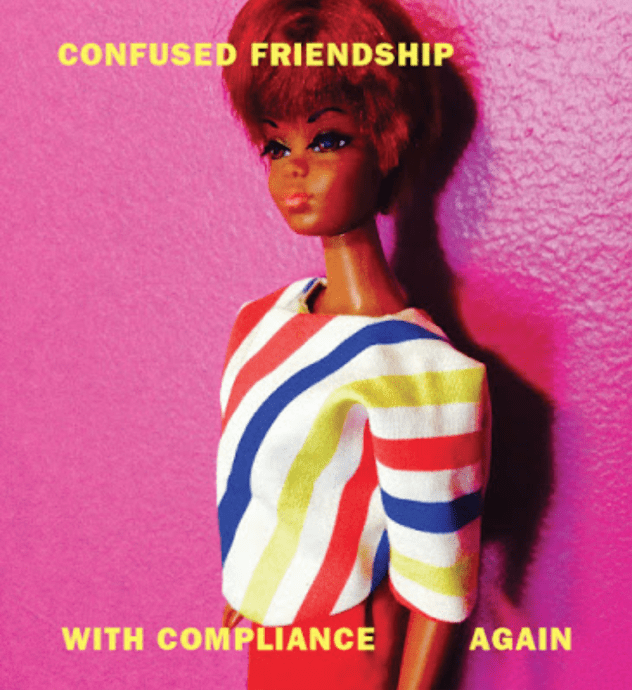
from Nikki Wallschlaeger’s “I Hate Telling You How I Really Feel”
For the students, there was a lot of material to work with, specifically the angst of early adolescence which unraveled in the final prompt of the day. For Ryan and Theo, freshman year of high school was either in full throttle or just months away. In snippets of their conversations, both to one another and everyone else, they confessed that often they did not believe their peers saw them as fully realized individuals. This ran in contradiction with how they saw themselves; not always concrete beings but nonetheless valid. In a way, there is a parallel between the reality of their lived experience–and the experiences of many young people– and the workshop itself. There is what people see, and then what people imagine as a result.
With that, the work of Nikki Wallschlaeger was the perfect gateway to the final prompt of the workshop: the making of memes. Sharp shared a slideshow with several odd and inexplicable images; three pigeons perched on a McDonald’s “dining” table, a man face down on a road, a penguin and bagpiper in the same photo.
The students, Travis, JBWC’s Robin Jordan, and I worked for 10 minutes. The result was a mix of comedic loneliness, T.S. Elliot quotes, and of course, existential dread. Really, they speak for themselves:
Laritza Salazar


